Q21:
AS & A Level Chemistry - 9701 Paper 1 2023 Summer Zone 3
Questions:
21/40

Topic: CH8 - REACTION KINETICS
Solution
Solution is B

PRACTISE
Similar Questions

LEARN
Concepts with Sparky

More Questions from this Topic
Theory
CH8 - REACTION KINETICS
(a) \( NH_3(g) \) reacts with \( HCl(g) \) to produce \( NH_4Cl(s) \), as shown.\[ NH_3(g) + HCl(g) \rightarrow NH_4Cl(s) \]Draw a diagram to show the...
2024
 Summer
Summer
 Summer
Summer
 2
2
Theory
CH8 - REACTION KINETICS
(a) A and B react together to give product AB.A + B → ABWhen the concentrations of A and B are both 0.0100 mol dm−3, the rate of formation of AB i...
2024
 Winter
Winter
 Winter
Winter
 3
3
Theory
CH8 - REACTION KINETICS
(a) The equation for reaction 1 is shown.reaction 1\qquad X \rightarrow 2YReaction 1 is first order with respect to the concentration of X. The half-l...
2024
 Winter
Winter
 Winter
Winter
 2
2
Theory
CH8 - REACTION KINETICS
(a) In aqueous solution, persulfate ions, $S_2O_8^{2-}$, react with iodide ions, as shown in reaction 1.reaction 1 $S_2O_8^{2-} + 2I^- \rightarrow 2SO...
2024
 Summer
Summer
 Summer
Summer
 2
2
Theory
CH8 - REACTION KINETICS
(a) In aqueous solution, persulfate ions, $\text{S}_{2}\text{O}_{8}^{2-}$, react with iodide ions, as shown in reaction 1.reaction 1 $\text{S}_{2}\tex...
2024
 Summer
Summer
 Summer
Summer
 2
2
Theory
CH8 - REACTION KINETICS
(a) A and B react together to give product AB.A + B → ABWhen the concentrations of A and B are both 0.0100 mol dm⁻³, the rate of formation of AB ...
2024
 Winter
Winter
 Winter
Winter
 3
3
Theory
CH8 - REACTION KINETICS
Potassium chlorate, $KClO_3$, is widely used as an oxidising agent and to make $O_2(g)$.(a) Define oxidising agent.......................................
2023
 Winter
Winter
 Winter
Winter
 2
2
Theory
CH8 - REACTION KINETICS
Fluorine reacts with chlorine dioxide, $ClO_2$, as shown.$$F_2(g) + 2ClO_2(g) \rightarrow 2FClO_2(g)$$The rate of the reaction is first order with res...
2023
 Winter
Winter
 Winter
Winter
 2
2
Theory
CH8 - REACTION KINETICS
Potassium chlorate, $KClO_3$, is widely used as an oxidising agent and to make $O_2(g)$.(a) Define oxidising agent.......................................
2023
 Winter
Winter
 Winter
Winter
 2
2
Theory
CH8 - REACTION KINETICS
Hypophosphorous acid is an inorganic acid.The conjugate base of hypophosphorous acid is $\text{H}_2\text{PO}_2^-$.(a) Give the formula of hypophosphor...
2023
 Spring
Spring
 Spring
Spring
 1
1
More Questions from year 2023
Theory
CH3 - CHEMICAL BONDING
The Pauling electronegativity values of elements can be used to predict the chemical properties of compounds.Use the information in Table 1.1 to answe...
2023
 Spring
Spring
 Spring
Spring
 2
2
Theory
CH10 - GROUP 2
The Group 2 elements Mg to Ba are all silvery-white reactive metals.(a) (i) Draw a labelled diagram to show the bonding and structure of the Group 2 m...
2023
 Spring
Spring
 Spring
Spring
 2
2
Theory
CH15 - HYDROCARBONS
(a) (i) Define addition reaction.........................................................................................................................
2023
 Spring
Spring
 Spring
Spring
 2
2
Theory
CH16 - HALOGEN DERIVATIVES
(a) (i) State the reagent and conditions used to form E in reaction 1....................................................................................
2023
 Spring
Spring
 Spring
Spring
 2
2
Theory
CH2 - ATOMIC STRUCTURE
(a) The most common zinc mineral contains zinc(II) sulfide, ZnS.(i) Complete the electrons in boxes diagram in Fig. 1.1 to show the electronic configu...
2023
 Spring
Spring
 Spring
Spring
 3
3
Theory
CH6 - ELECTROCHEMISTRY
Hypophosphorous acid is an inorganic acid.The conjugate base of hypophosphorous acid is $\text{H}_2\text{PO}_2^-$.(a) Give the formula of hypophosphor...
2023
 Spring
Spring
 Spring
Spring
 1
1
Theory
CH12 - AN INTRODUCTION TO THE CHEMISTRY OF TRANSITION ELEMENTS
Vanadium is a transition element in Period 4 of the Periodic Table.(a) Define transition element.........................................................
2023
 Spring
Spring
 Spring
Spring
 2
2
Theory
CH20 - NITROGEN COMPOUNDS
Ethylamine and phenylamine are primary amines.Fig. 4.1These two compounds are synthesised by different methods.(a) Several methods can be used to form...
2023
 Spring
Spring
 Spring
Spring
 3
3
Theory
CH14 - AN INTRODUCTION TO ORGANIC CHEMISTRY
(a) Tulobuterol contains a benzene ring in its structure.Describe and explain the shape of benzene.In your answer, include:• the bond angle between ...
2023
 Spring
Spring
 Spring
Spring
 2
2
Theory
CH22 - ANALYTICAL TECHNIQUES
(a) (i) Suggest a compound that could be used as the stationary phase in this experiment.................................................................
2023
 Spring
Spring
 Spring
Spring
 1
1




 Share
Share




 Previous
Previous




